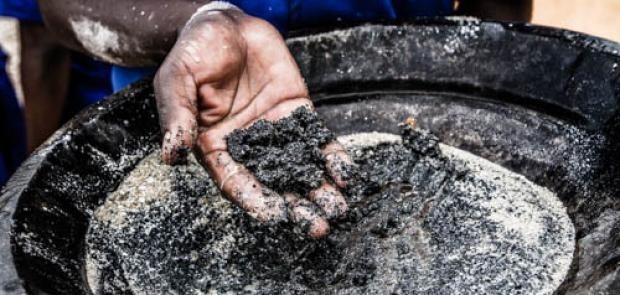Blog
Breaking mining myths in Rwanda

In countries around the world, the extraction of minerals plays a vital role in supporting local communities and individuals. Mineral resources are finite and non-renewable, but mining can be responsible and its benefits sustainable, delivering value beyond the life of the mine.
Pact believes resource-dependent communities should gain lasting benefits from the natural resources around them. This is why we work in Rwanda, and other countries across Africa and Latin America, to ensure mining is a safe and secure livelihood and that communities reap the many benefits minerals can bring.
But there is a lot of controversy around mining. Claims such as “‘conflict-free’ mining hurts miners,” “mining is detrimental to agriculture,” and “large companies make millions while hardworking miners barely scrape by” are tossed around frequently by critics who do not have access to the full story.
We want to set the record straight. In Rwanda, the outlook is bright.
In 2010, Rwanda began implementing a mineral traceability and due diligence system, iTSCi, to ensure the minerals that make up our phones, computers, airplanes and many other everyday products are conflict-free. Today, the now-formalized mining sector in Rwanda is the second largest income-generating industry in the country, growing at a rate of 44 percent per year since 2008.
Last year, the industry garnered $226 million in export revenue, an increase of $58 million over 2011. But the government and companies aren’t the only ones benefiting.
In 2011, the mining sector employed 25,000 people. That number is steadily growing. Last year, more than 33,000 Rwandans worked in the industry. By 2018, it is expected to nearly double.
Miners now have health insurance, worker’s compensation and more money in their pockets. At a mine site we visited near Mutara village, some workers have increased their income thirtyfold, from 1,000 Rwandan Francs per day farming to 30,000 per day mining.
Communities are seeing benefits too. Economic and development plans are in place at all mining areas. The plans, developed in conjunction with communities, build schools, hospitals and roads and improve local water supply. In addition to these formal plans, organic growth is happening near mine sites due to the influx of workers. Near Nyakabingo mine, about 30 minutes drive from Kigali, a vibrant row of local businesses sprung up to serve the growing mining area.
Companies are also investing in local communities. Eurotrade International, which operates the Nyakabingo mine, invests 54,000,000 to 60,000,000 Rwandan Francs per month in local communities.
While miners, their families and communities benefit from mining, Rwanda is also seeing a benefit to agriculture instead of the suggested slump.
Critics argue that since farmers tend to earn a lot less money than miners, people leave the agriculture sector for mining, abandoning farmland. Instead, many miners, like Helene Mukansanga, now have the means to hire others to continue farming their land while they mine. Helene, a miner at the Gatoki mine near Mutara Village, purchased land with her increased income and now employs others to farm her land. Other miners choose to mine seasonally, farming during the harvest season and mining the rest of the year.
The mining sector in Rwanda isn’t perfect. They will be the first to tell you that. But it is a shining example of what can happen when government, business and local communities work together.
Mining represents an opportunity. In Rwanda, it is already providing a brighter future for thousands of miners, their families and communities.
Pact is working to improve the lives and livelihoods of more than 73,000 miners in the Africa Great Lakes region and almost a million community members whose lives and livelihoods depend on these natural resources. Pact currently implements the iTSCi system at 437 mines in DRC, 776 mines in Rwanda and 24 mines in Burundi.